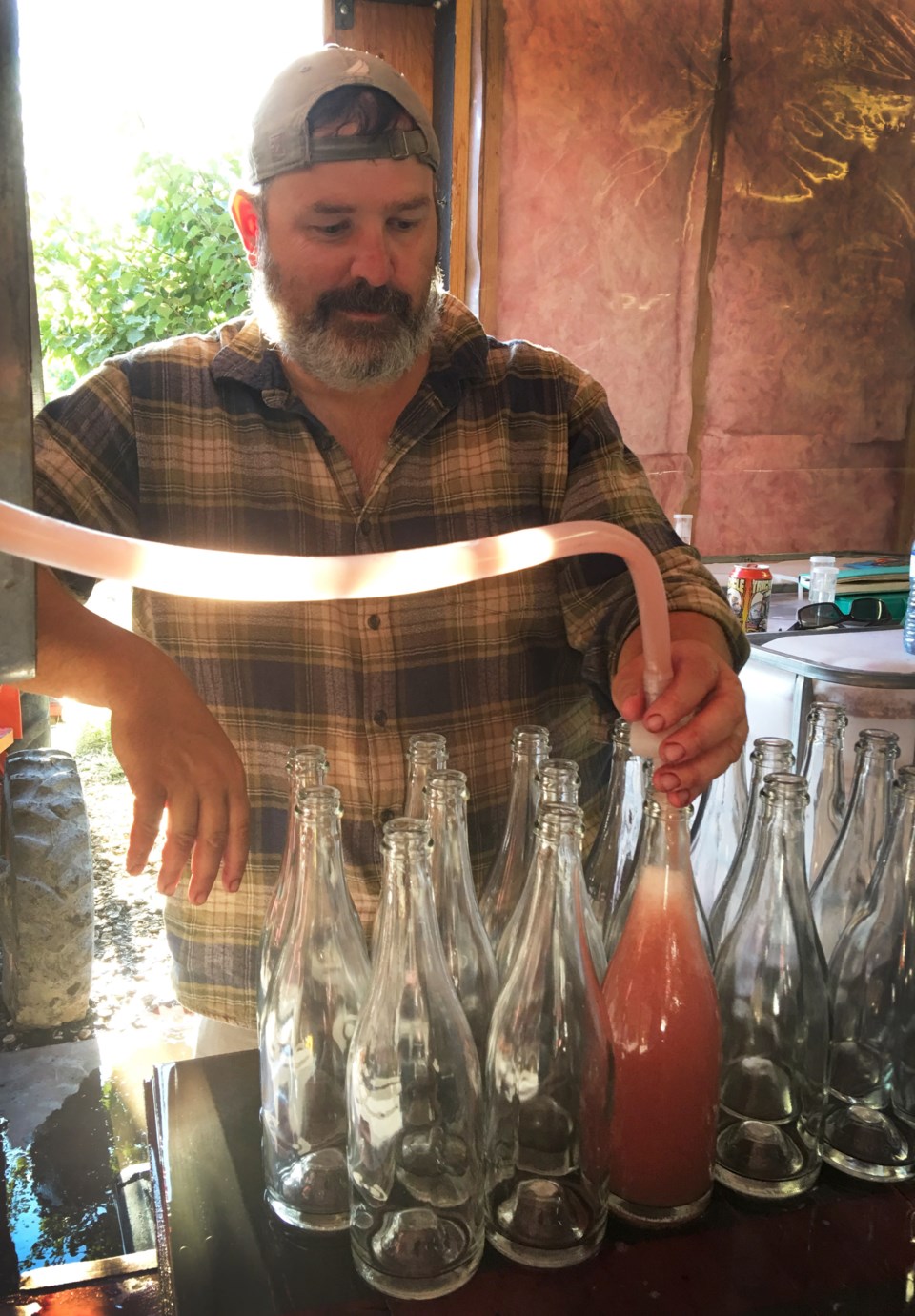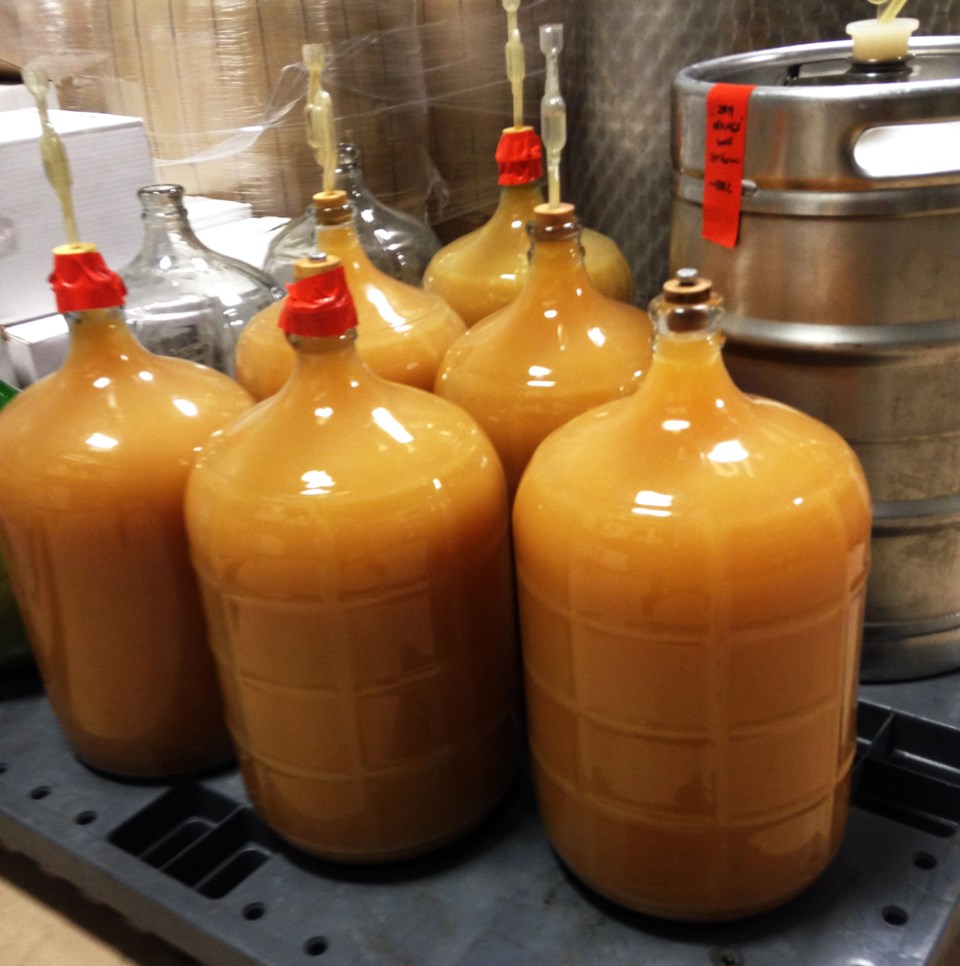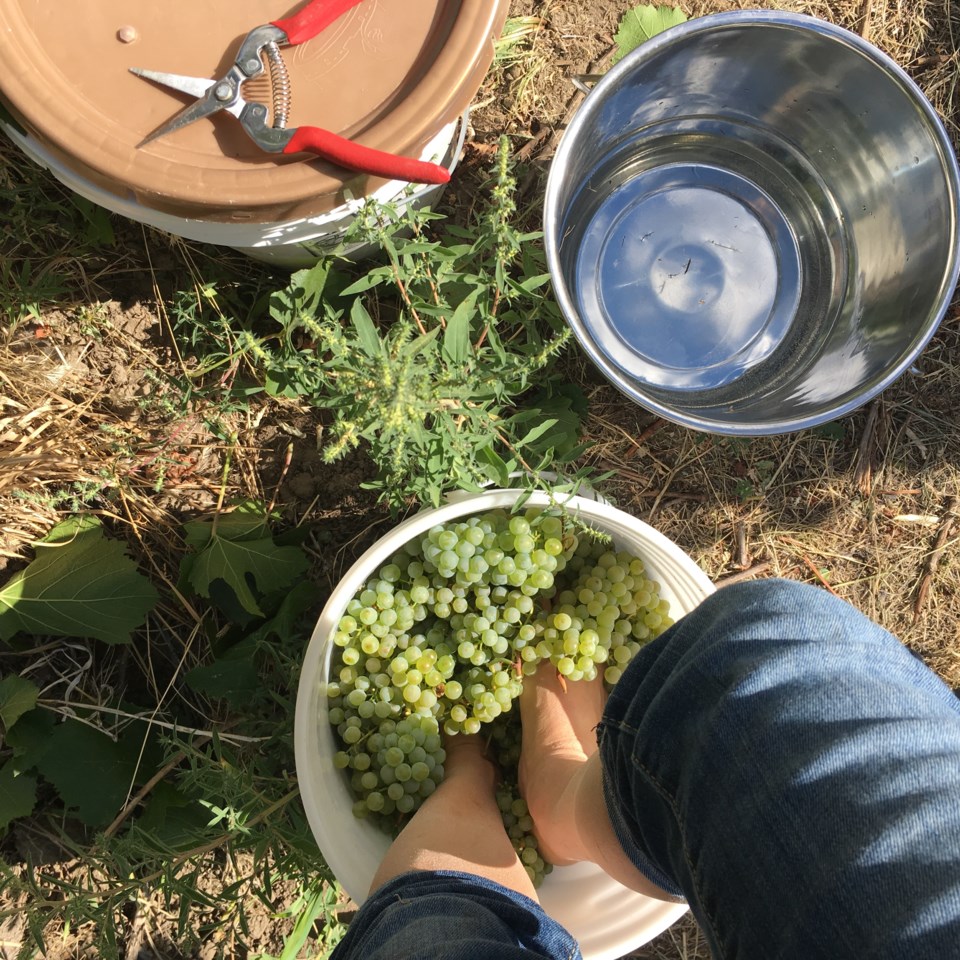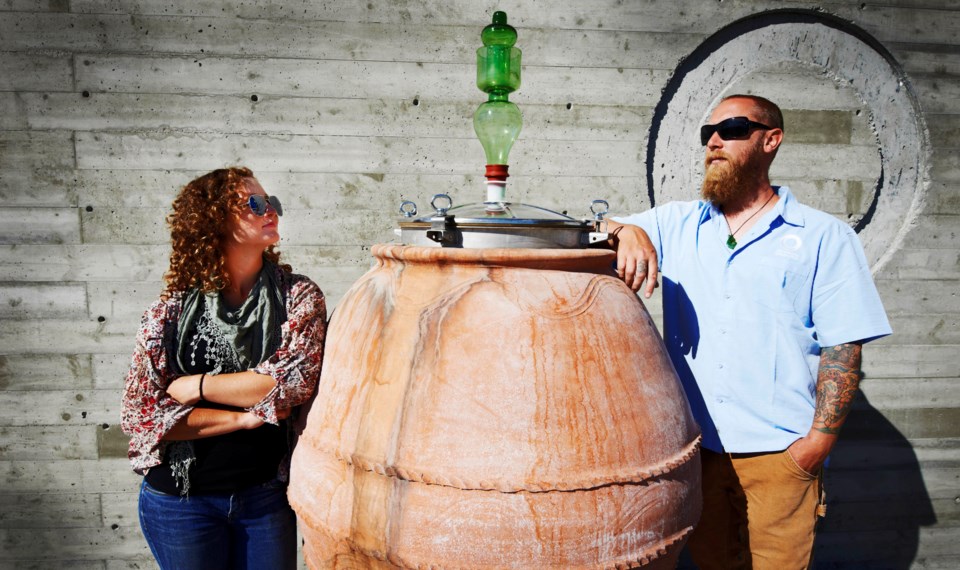Despite B.C.’s brief vinous history, our winemakers have managed to explore every popular grape variety, and many lesser-known varieties, as well as the full spectrum of wine styles. Many are savvy to international trends and the most adventurous are delving into the extremes. This includes the controversial and oft-misunderstood category of natural wine.
Rhys Pender, master of wine, makes natural wine at his Little Farm Winery in the Similkameen Valley. He suggests that wine drinkers might be confused in asking for a natural wine, when really they’re looking for one that is organic. While a natural wine may be made from organically grown grapes, it goes far beyond this.
Rather than a grape growing or winemaking approach, natural wine embodies a larger philosophy that counters the industrialization and over-manipulation of wine. It hearkens back to how wine was made before modern science provided tools to control much of the process. There is no official definition, but natural wine starts with hand-harvested grapes that are grown according to organic or biodynamic principles. Disciples eschew additives, adjustments, filtering, fining and recourse to technology that alters the makeup of a wine. Pender calls natural wine, “a pure reflection of the place, the grape and the vintage.”

Jay Drysdale of Bella Wines is also a convert. “Most additives are to make it easier for the winemaker,” he says. Drysdale makes a dizzying range of sparkling wines. Those using the “Ancestral Method” fall into the natural category. The project was driven by “the desire to know what a sense of place in B.C. was,” he explains. One of the crucial elements for him was switching from commercial yeast (a natural wine no-no), which he found made generic wines, to wild ferments. This means allowing the indigenous yeast on the grape skins and in the winery to kick off fermentation spontaneously. “I am excited about the differences I am seeing,” he states.
The only additive tolerated by naturalists is sulphur dioxide (SO2), and sparingly. Many don’t add any. Before you celebrate this as good news, consider that SO2 is used to keep wine fresh (curbing oxidation) and clean (protecting from microbial spoilage that can give nasty smells and flavours). There are plenty of “non-natural” wines with modest SO2 levels. However, leaving a wine unprotected renders it more susceptible to flaws, especially when coupled with other methodologies favoured by natural winemakers. Indeed, some (though definitely not all) natural wines may be oxidized or demonstrate other faults which annihilate any sense of place. It takes a skilled winemaker who understands the science to avoid this.
Things get even crazier with orange wines. Embraced by natural winemakers, this style references ancient times when white grapes were handled just like reds. The skins, and sometimes the stem, are left in contact with the juice anywhere from mere days to many months. This gives a gorgeous array of colours as well as a tannic tactile sensation and a savoury rather than fruity character.

Ann Sperling, winemaker and owner of Sperling Vineyards, crafts orange wine from Pinot Gris. Aptly named Amber, it’s macerated for one month. “You go through all this trouble in the vineyard and throw away 35 per cent of what you harvest,” she explains, referring to modern white winemaking. “The exciting thing about orange wine is that the skin and stems are included in the fermentation.” It’s a complete departure from the B.C. Pinot Gris you know.
The reprise of the amphora, particularly championed by the natural set, is also inspired by antiquity. This clay vessel, which resembles a huge terracotta vase, was used to store and transport wine. Laughing Stock owner David Enns started experimenting with amphorae five years ago. In 2016, he trialled Syrah, which went straight from picking and destemming into the amphorae as whole berries. He then left them for eight months. “You can’t get much closer from the vineyard to the glass than this,” says Enns.
Matt Dumayne, winemaker for Haywire at Okanagan Crush Pad Winery, now works with six amphorae for the winery’s “Free Form” label. He explains that they are much more porous than oak barrels. While oxidation is a risk, he believes keeping solids like skins and stems in contact with the wine gives protection. He is more concerned about breaking the amphorae. “They worry me,” Dumayne admits, referring to the fragility of these vessels, which cost upwards of $4,500 each.
Making natural wine can be risky business. Critics argue that the natural approach ends up creating its own set of funky aromas and flavours that override terroir. Furthermore, natural wines often demonstrate bottle variation, where one is delicious and the next less so. Other caveats include the lack of certification or regulation over the word natural. “Natural” doesn’t guarantee quality and, like any wine, each should be evaluated individually.
For most of our B.C. wineries who have indulged, natural wines represent an experimental side project. Experimenting is a necessary and natural part of growing up. While the most extreme of these wines might not represent the mainstream future, hopefully some of the inspiration behind them will: cultivating healthy, chemical-free vineyards and using science to intervene less, with the goal to make unique and characterful wines that express their origin.
Tasting wine from B.C. has never been more exciting.
Tasting notes
2016 Bella Wines, Sparkling Ancestrale Rosé, Brut Natural, Okanagan Valley, $39.90, winery direct
The Ancestral Method is based on how sparkling wine was made in the past. It’s bottled partway through fermentation, so the remaining grape sugars continue fermenting in the bottle, which traps the CO2. Made from 100 per cent organically grown, hand picked and wild fermented Gamay, it offers crunchy cranberry, red currant and a lively mousse. While Ancestral Method sparklers are often a little bit sweet, this one is bone dry.

2016 Little Farm Winery, ‘Pied de Cuve’ Riesling, Mulberry Tree Vineyard, Similkameen Valley, $30, winery direct
Little Farm’s Pied de Cuve label represents its natural wines. It refers to a technique in which a small portion of grapes are picked several days before harvest, crushed by foot and allowed to ferment outside in the vineyard thanks to the yeast on the skins. This starter batch is then used to initiate fermentation of the main harvest. As it’s unfined and unfiltered, it might be just a touch cloudy. But have no fear; this Riesling is dry and very zippy with fresh green apple and a tangy lemon backbone.
2016 Laughing Stock Vineyards, Amphora Syrah, Okanagan Valley, $49.99, winery direct
Wild fermented, no filtering, no fining and very little SO2 added just before bottling. It’s a pleasure to taste a Syrah without any oak notes getting in the way. The Laughing Stock is a pure expression of all its seductive voluptuous fruit, where succulent dark ripe cherries meet black pepper and violets. This is really delicious stuff. It will be released at the winery in November and poured exclusively by the glass at L’Abattoir.



